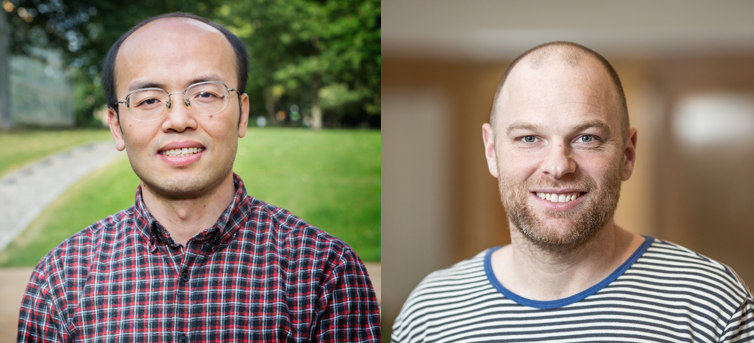Two Villum Experiment grants to AIAS Fellows
Current AIAS Fellow Yonghui Zeng and former Fellow Magnus Kjærgaard have each received a DKK 2 million grant by the Villum Experiment programme that reward scientists who question conventional thinking.

The VILLUM FONDEN has selected 52 innovative research projects to receive funding as part of the Villum Experiment programme. Current AIAS Fellow Yonghui Zeng has been awarded the Experiment grant for his project entitled ‘Link Phototrophy and Methanotrophy in Glacial Bacteria’ and it is actually the second time that Yonghui Zeng is awarded a Villum Experiment grant, the first one in 2017, also during his AIAS Fellowship. Former AIAS Fellow Magnus Kjærgaard from the Department of Molecular Biology and Genetics at Aarhus University has also received a Villum Experiment grant for his project on ‘Self-assembled protein droplets as reaction platforms for biotechnology’.
About Villum Experiment
Villum Experiment funds exceptional research projects in the technical and natural sciences that challenge norms and have the potential to fundamentally alter our approach to key questions.
The applicants are anonymous to the international panel of peer reviewers, which allows them to focus on the research proposal alone and give researchers freedom of scope in relation to their current academic standing.
This programme is advertised annually in an open competitive call for proposals. The grant is worth up to DKK 2 million and is for up to two years.
Read more about Villum Experiment here
About Yonghui Zeng's project
Phototrophy and methanotrophy are widely used lifestyles in environmental bacteria to conserve energy and carbon. There is a long-standing hypothesis that these two metabolisms can co-occur in a single microbe. However, such intriguing microorganisms of great biotechnological potential have never been found in nature. Here we propose that phototrophic methanotrophs have evolved in the high Arctic glaciers as an adaptation to scarce organic matter but ample supplies of summer sunlight and methane from thawing permafrost. We will use a high-throughput cultivation approach coupled with the latest detection technology for photosynthetic pigments to isolate these capable microbes and uncover their genomic and metabolic secrets.
Contact
Yonghui Zeng, AIAS Fellow
yzeng@aias.au.dk
Aarhus Institute of Advanced Studies &
Department of Environmental Science
Aarhus University
Magnus Kjærgaard, Assistant Professor, AIAS Former Fellow
magnus@mbg.au.dk
Department of Molecular Biology and Genetics
Aarhus University
Denmark
